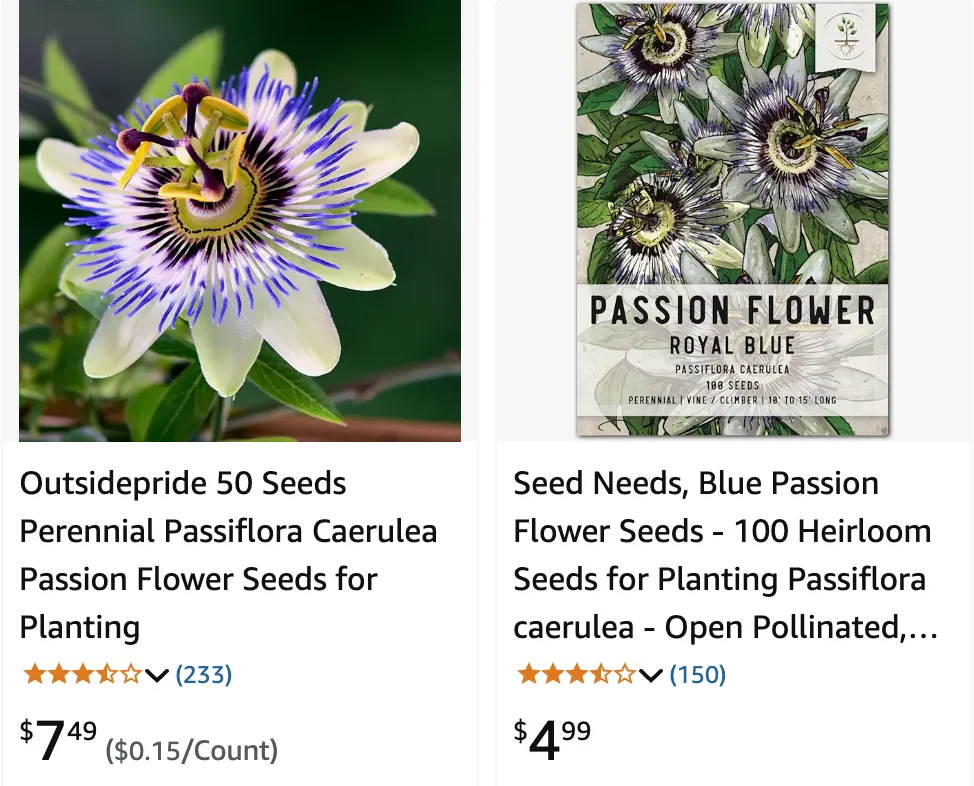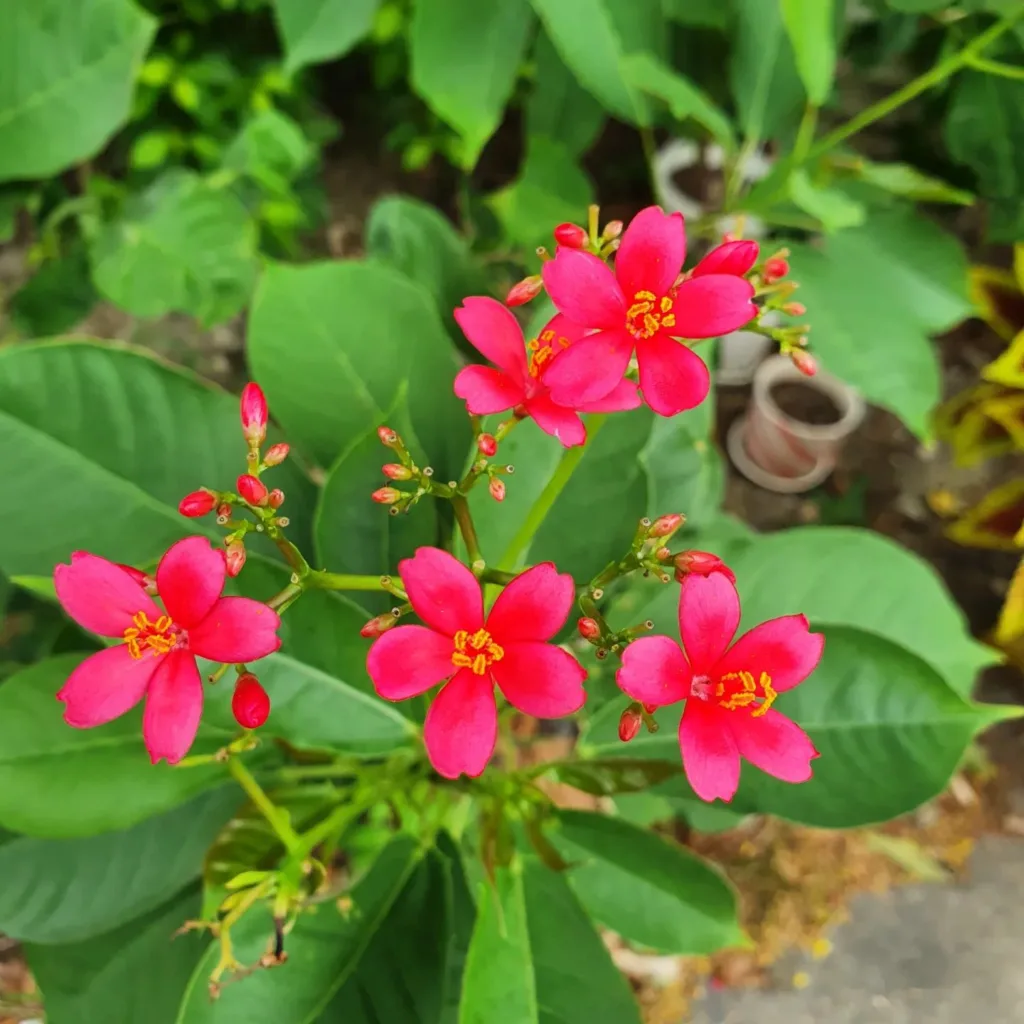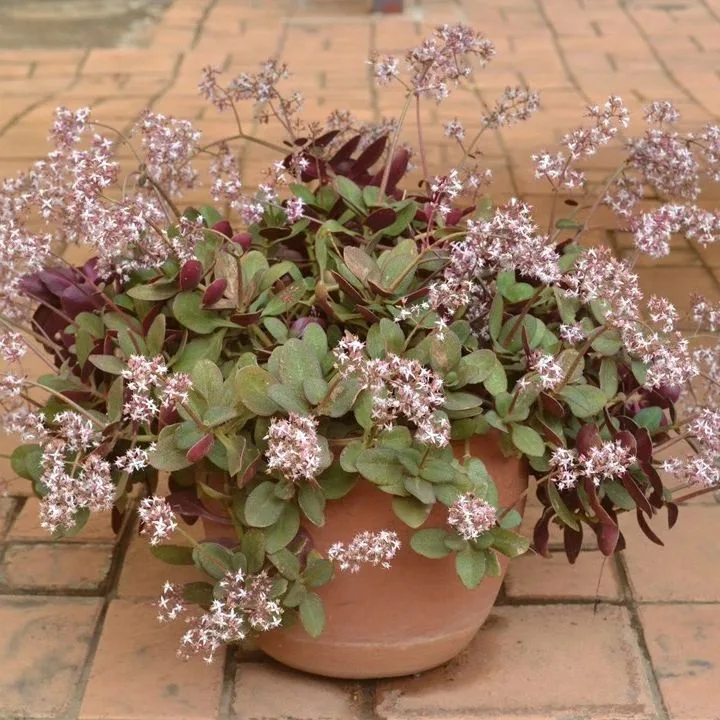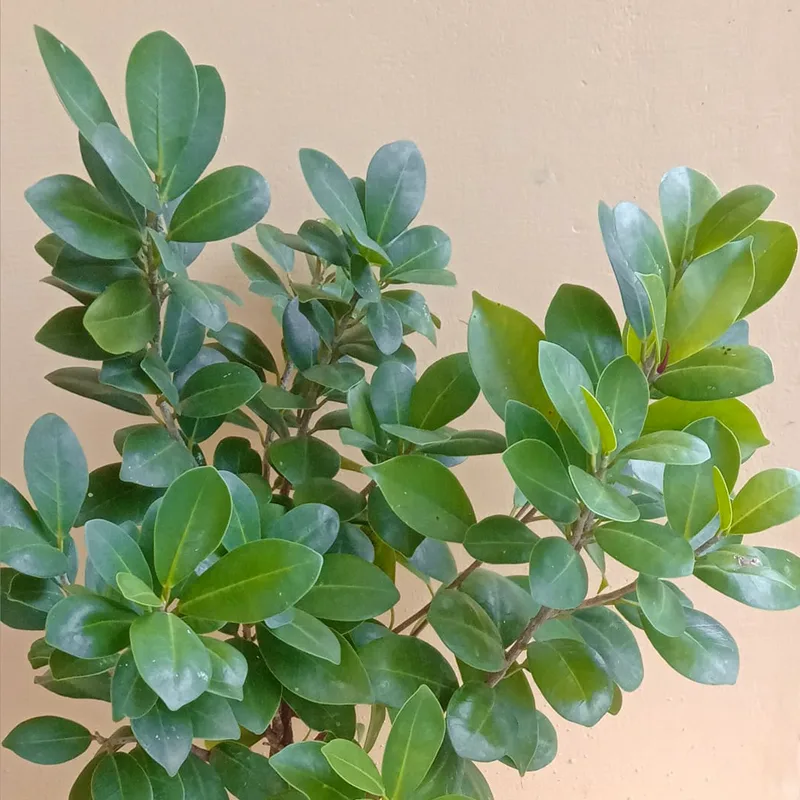
595 Species in Genus Passiflora
What is Passiflora caerulea?
Passiflora caerulea, commonly known as the blue passionflower, is a fast-growing, hardy vine native to South America. It’s celebrated for its exotic-looking blue and white flowers and its ability to thrive in various climates. This plant is not only beautiful but also attracts pollinators like bees and butterflies, making it a great addition to any garden.
Is Passiflora caerulea poisonous?
Yes, Passiflora caerulea can be toxic to humans and animals. The unripe fruit contains compounds that may cause mild gastrointestinal distress if ingested. While the ripe fruit is generally considered safe to eat, I’d recommend caution, especially if you have pets or small children who might nibble on the plant.
How to grow Passiflora caerulea?
Growing Passiflora caerulea is relatively easy. Plant it in well-draining soil with plenty of organic matter. It thrives in full sun but can tolerate partial shade. Provide a sturdy support structure, such as a trellis or fence, as this vine can grow quite vigorously. Regular watering and occasional feeding with a balanced fertilizer will keep it healthy and blooming.
Is Passiflora caerulea evergreen?
Yes, Passiflora caerulea is evergreen in warm climates. However, in cooler regions, it may lose its leaves during winter and regrow in spring. If you live in a frost-prone area, you may need to protect the plant during colder months to maintain its evergreen nature.
Passiflora caerulea vs Passiflora incarnata: What are the differences?
Passiflora caerulea and Passiflora incarnata are often confused, but they have distinct differences. Passiflora caerulea has striking blue and white flowers, while Passiflora incarnata, known as maypop, has purple or lavender flowers. Additionally, P. incarnata is more commonly used for its medicinal properties and edible fruit. P. caerulea, on the other hand, is often favored for its ornamental value.
How to care for Passiflora caerulea?
Caring for Passiflora caerulea involves regular watering to keep the soil moist but not waterlogged. Prune it in late winter or early spring to remove dead or overcrowded stems, which encourages better growth and flowering. Watch out for pests like aphids and caterpillars, and treat them promptly if they appear.
How to propagate Passiflora caerulea?
You can propagate Passiflora caerulea through seeds, cuttings, or layering. For cuttings, take a healthy stem with at least two nodes and root it in moist soil or water. Layering involves bending a flexible stem to the ground, covering a section with soil, and waiting for roots to form before separating it from the parent plant.
What can you plant with Passiflora caerulea?
Passiflora caerulea pairs well with other climbing plants like clematis or honeysuckle to create a lush, layered effect. It also works beautifully with shrubs or perennials such as lavender, echinacea, or salvia, which provide complementary colors and textures.
Can you grow Passiflora caerulea indoors?
While Passiflora caerulea is best suited for outdoor growth, you can grow it indoors with sufficient light. Place it near a sunny window or use a grow light to ensure it receives enough light to thrive. Keep in mind that it will need a trellis or support structure even indoors.
Is Passiflora caerulea toxic?
Yes, certain parts of Passiflora caerulea are toxic. While its ripe fruit is often safe to eat, the leaves and unripe fruit can be harmful if ingested in large quantities. Always keep it out of reach of pets and children to avoid accidental ingestion.
What are the benefits of growing Passiflora caerulea?
Passiflora caerulea is not just a stunning ornamental plant; it also attracts pollinators, provides shade when grown on pergolas, and can create privacy as a dense screen. In addition, its ripe fruits are edible and mildly sweet, though they are not as flavorful as other passionfruit varieties.
What are the common problems with Passiflora caerulea?
Passiflora caerulea can face issues such as aphids, spider mites, and caterpillar infestations. Yellowing leaves may indicate overwatering or nutrient deficiencies. In cooler climates, frost damage can be a concern. Regular monitoring and proper care can prevent most of these problems.
If i die, water my plants!



